After 175 days on the road, Christi and I have decided to split up. It was a tough decision to take, but there was simply not enough time to see the Cartagena museum of Modern Art, the Cartagena Gold Museum, and La Boquilla in the same day. We’ve agreed to stay together for the sake of visiting La Boquilla this morning, but the truth is I’ve been seduced by the enticing, exquisite beauty of the Gold Museum; something that Christi is having a tough time understanding, so she is seeking solace in the arms of the Modern Art Museum. We hope, dear reader, that you will respect our privacy at this difficult time.
There are few scenic delights close enough to Cartagena that they can be visited as a day trip. We thought about going further afield to visit Santa Marta and perhaps hike Colombia’s version of the Inca Trail, which is called Ciudad Perdida (Lost City). Apparently the ruins are not as majestic as Machu Picchu so the appeal or the marketing is on the multi-day hike through the jungle rather than destination. But when Christi learns that the ruins are finally accessed by 1200 steep steps through dense jungle, she throws a tantrum and warns our split will be a lot longer than an afternoon if I raise the subject again. To be honest the thought of exchanging a comfy bed in Cartagena for a mosquito-infested tent in the jungle is not that appealing, which is why we end up taking the short taxi-ride to La Boquilla instead.
Our Lonely Planet guidebook insists La Boquilla is an attractive, sleepy fishing village 7 km north of Cartagena. However, our taxi is attacked by a group of itinerant youths upon our arrival. Our driver plows through the crowd without slowing down, although not fast enough to stop one youth from attaching himself to the car and holding on for dear life. Our driver screams blue murder (or poner el grito en el cielo as they say around here) at the attached offender. We learn later that these youths are self-styled gatekeepers and tour guides. They insist you pay a fee to enter La Boquilla (which our taxi driver clearly ignored) and also that you hire one of them to show you the highlights of the town. Our unscheduled passenger/guide is dragged along for 100 yards or so before tumbling to the ground, creating a mini sand storm. We don’t hire him.
I expected La Boquilla to be a Trindade-like tropical wonderland. Alas it’s gray, dull, and lifeless. Languid restaurateurs barely take an interest as Christi and I walk past. A few locals are frolicking in the waves, but there are no other western tourists in sight, which is rather suspicious. As Christi and I stroll along the beach another wave of ‘tour guides’ badger us about a boat ride through some ‘beautiful mangroves,’ but it seems unlikely that anything around here could be described as beautiful. Indeed this part of the Caribbean sea is not at all romantic. The aggressive youths eventually lose interest in us, thank god, leaving Christi and I to wander the beach alone. It’s a truly uninspiring experience. Even the thatched-hut restaurants are all closed and a week’s worth of rubbish is festering by these shacks so there’s not much prospect of (or desire for) lunch. One block back from the beach is even worse: it’s a virtual slum. I’ll bet the cruise ship passengers from Cartagena don’t visit La Boquilla – and who could blame them. The only time our excitement level rises is when we board the local Vehitrans bus back to Cartagena. The bus is pretty beat up, but then so is La Boquilla.
Before Christi and I go our separate ways we enjoy a relaxing lunch at our favorite restaurant, the Zebra Cafe in San Diego plaza. Thereafter Christi goes one way and Igo another. And we agree that whatever happens in Cartagena this afternoon stays in Cartagena. The Museum of Gold is a smaller version of Bogota’s Museo del Oro and focuses solely on the Zenu people and not only has gold icons on display, but finery, alloys, and pottery. The museum also retells the Zenu penchant for taming the annual floods that beset their lands. Using a series of terraces and canals, the Zenu were able to direct the flood water, controlling its movement and preventing their villages from being inundated. This process also supported fishing and the provision of fresh nutrients when the floodwaters subsided. Not only were the Zenu smart they were very eco-friendly.
Blog post by Roderick Phillips, author of Weary Heart – a gut-wrenching, heart-breaking tale of love and test tubes.
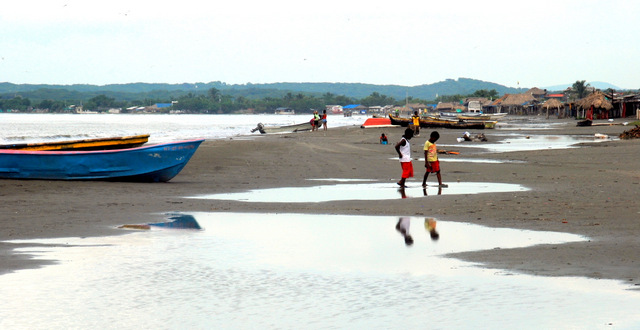
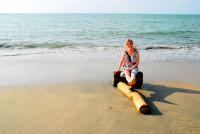
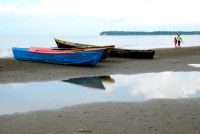

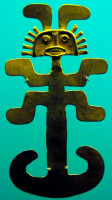
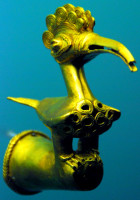
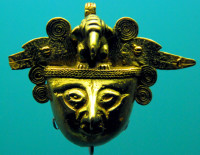
Speak Your Mind